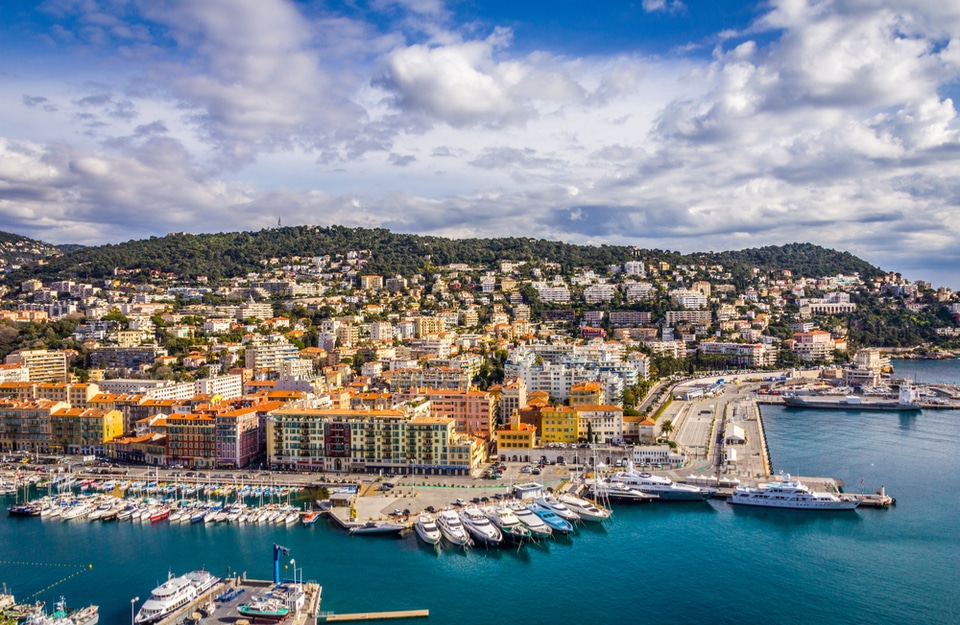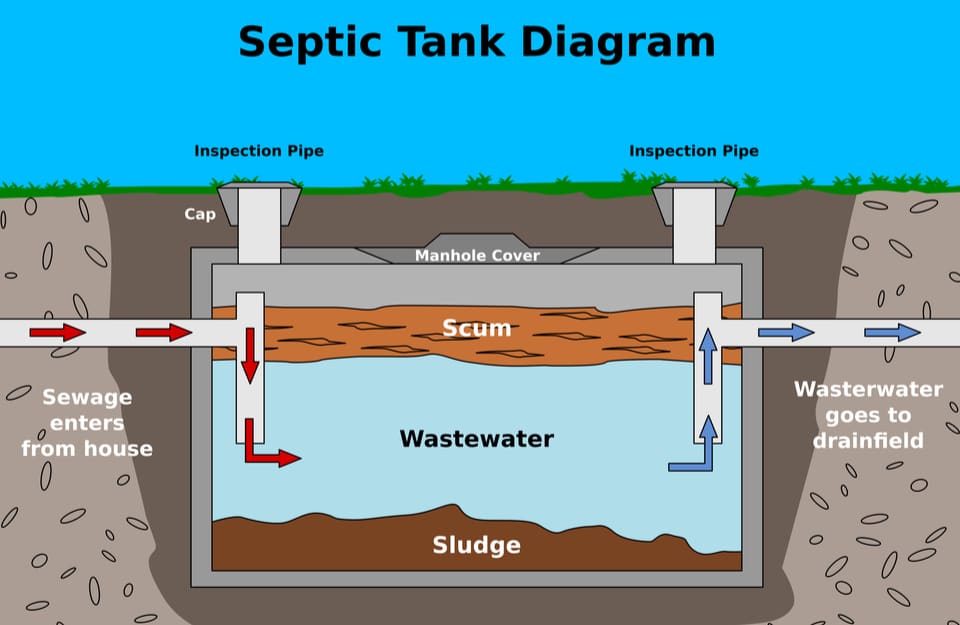If you have bought (or you’re thinking of buying/selling) property in France, you’ll need to know a thing or two about septic tanks (Fosse Septique in French).
It may not be the most glamorous accessory in your home, but chances are your septic tank will be one of the most useful.
Septic tanks are very common in France, and over 5 million homes use a stand-alone waste disposal unit rather than the public drainage system. If your new property is located outside of the town or city centre, you may well find yourself the proud new owner of a septic tank.
So, what do you need to know about this exciting new acquisition? Here’s the full rundown of life with a septic tank and the various regulations which apply to this type of drainage system.
Reccomended for you: Questions to Ask When Buying Property in France
The septic tank – how does it work?
A septic tank is a large tank which filters and treats household waste-water and sewage. Buried outside your property, the septic tank filters and pre-treats the waste-water from your kitchen, bathroom and toilets.
Inside the tank, the waste-water separates into three layers with the lightest waste floating on the surface and the heavy solids settling at the bottom of the tank. Bacteria present in the tank transforms the waste into gas, C0² and water before it passes through a filter bed to remove any toxic particles. Once the water has been treated, it then drains safely away into the ground without harming the environment.
Installing a new septic tank
Following a change in the law back in 2011, a huge number of septic tanks in France no longer comply with current regulations. If your system is deemed to be non-compliant, you will probably have to install a new tank.
If this is the case, your first port of call should be your local Service Public de l’Assainissement Non-Collectif aka SPANC. They will be able to give you a list of approved septic tank systems, recommend registered companies who can install the new system and carry out soil tests or a ground condition survey on your property before installation if necessary.
They can also help you fill out the ‘Demande d’Installation d’un Dispositif d’Assainissement Non-Collectif’ application form required by law for all new septic tank installations. Your new installation will be covered by a 10-year building guarantee along with any survey work carried out before the installation takes place.
Looking after your septic tank
Luckily, once it’s installed, your septic tank won’t require too much maintenance. The Service Public de l’Assainissement Non-Collectif (SPANC), will carry out a compulsory inspection every four years on behalf of your local Mairie to check the system is working properly.
But there are a few things you can do to ensure your tank stays in tip-top condition in between inspections including:
- Avoid using too much toilet paper or flushing sanitary products in your bathrooms as septic tanks find it hard to deal with solid waste.
- Avoid flushing medicines, particularly antibiotics down the loo as their purpose is to eliminate bacteria including the useful bacteria in your septic tank.
- Use specific septic tank-friendly cleaning products rather than bleach which can upset the balance of the bacteria in the tank.
- Use a monthly or yearly activator treatment to restore bacteria levels in the tank and maintain a healthy system.
The 4-yearly SPANC inspection
Your local mairie is responsible for checking that your septic tank installation complies with the French rules.
They will contact you every four years to arrange a visit from the Service Public de l’Assainissement Non-Collectif (SPANC) who will inspect your system and order pump-out maintenance as required.
Your tank will need emptying either completely or partially when the sludge level shows it to be 60% full. Pump-outs can only be carried out by a registered and approved company, and you will need to retain all receipts and invoices for your records.
The SPANC inspection will cover all the essential details for your tank including:
- The exact location of your septic tank and grease trap
- The volume of waste in your tank
- The condition of your tank
- The various access points to the tank
- The tank’s ventilation system
- The sludge and scum levels in the tank
- The condition of the pipes running to and from the tank
- The filtration system
- The nature of the soil around your tank
- The proximity of your tank to any water sources either above or below ground
If your system fails the inspection for any reason, you will have 12 months to bring it up to standard again. Your local SPANC office will be available to offer advice and outline the work needed to rectify the problem.
Rules and regulations governing septic tanks
Introduced in the 1990’s, the rules and regulations governing septic tanks in France are now fairly detailed and quite stringently enforced.
The main regulations which apply to your septic tank installation are as follows:
- The minimum size for a septic tank is 3000 litres or 3 cubic metres for a property with three bedrooms or less. You will need to add another 1000 litres per each additional bedroom in the house.
- The septic tank must be installed at least 7 metres away from your house.
- If your septic tank is installed more than 10 metres away from the kitchen, you will need to install a fat trap/grease trap to avoid blocking the system.
- Your septic tank must not be installed within 3 metres of any neighbouring properties.
- Your septic tank cannot be installed within 3 metres of any trees or shrubs on your property although garden plants such as flowers are usually exempt from this rule.
- You must leave a distance of 35 metres between the tank’s filter bed and any water sources on your property such as rivers, streams or wells.
- Rainwater must not be allowed to enter your septic tank so you will need to ensure your property has an alternative drainage system to avoid this happening.
- Your septic tank must be properly ventilated and easily accessible via a covered manhole.
Selling a property with a septic tank
Following a change in the law in 2012, there are now strict rules governing the sale of properties in France equipped with septic tanks.
If you decide to put your home on the market, you will need to provide future buyers with a certificate of compliance to show your system meets with current regulations.
This certificate is issued by the SPANC and must be no more than three years old at the time of sale.
If the certificate shows that the system does not comply, the new owner of the property will have 12 months to upgrade it or to install a new septic tank.
If you fail to provide a certificate, the buyer is entitled to cancel the sale or ask you to lower the price of the property. They will also be entitled to sue you for damages later down the line if the system is found to have any hidden faults, so it’s well worth taking the time to get a full clean certificate as soon as you decide to sell your property.
You can find more information about the rules and regulations governing septic tanks in France here (in French):




